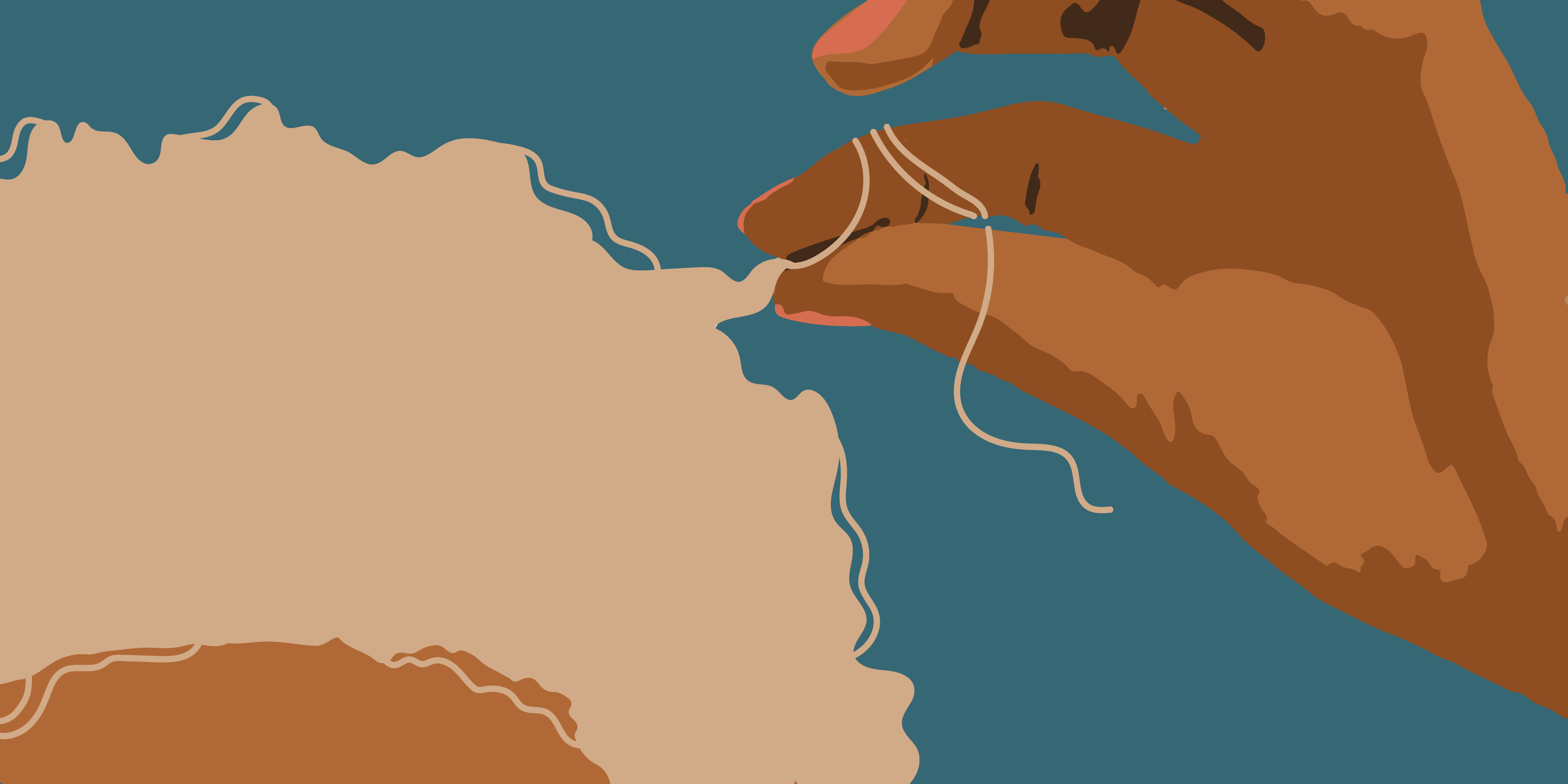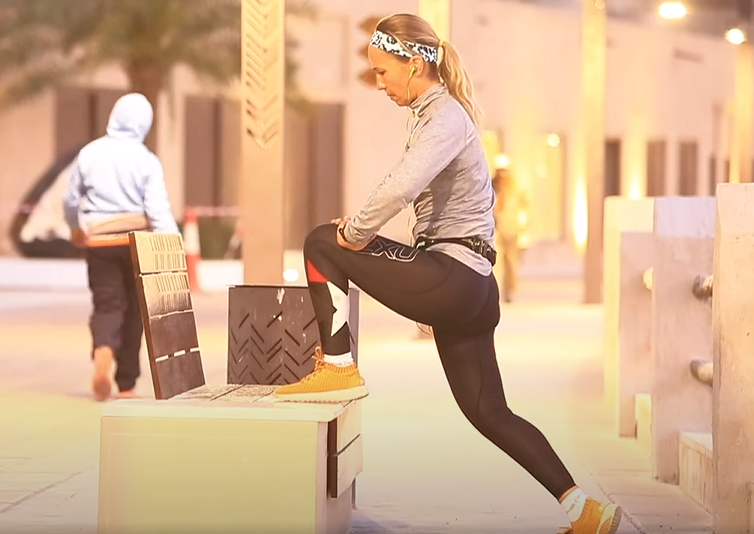Trichotillomania: a Common Disorder of Hair-Pulling

An illustration for Trichotillomania by Raghad Murad.
There was a spot on Noor Muthanna’s head that was itchy, so she asked her maid to check. It was a coarse and coiled strand of hair that the maid later pulled out when asked to. Noor was left with a tingly feeling, and very quickly over the course of three weeks, she developed all signs of a condition called Trichotillomania.
Trichotillomania, also referred to as hair-pulling disorder, “is an often debilitating psychiatric condition characterized by recurrent pulling out of one’s own hair, leading to hair loss and marked functional impairment,” according to a research paper published on The National Center for Biotechnology Information’s website.
“When it gets bad, I pull for hours on end — three four five six hours — and my wrists and fingers start to hurt,” Muthanna, a 20-year-old Jordanian national, who has been suffering from this condition for about seven years, said in a video call. “It’s exhausting mentally and physically, so at some points, you would really want to stop, but because you want to stop and it’s not working, you feel anxious and you pull more.”
At around the same age, Noelle Zarifeh started developing the same symptoms. After living through some traumatic events during the Lebanese war, she finally overcame this and was happy in her school and among her friends. When her parents discussed moving homes, Zarifeh felt stressed about this. She was 13.
“It was something I did in secret, but my mom noticed an empty spot on my head so she took me to a dermatologist, thinking it was a skin problem,” Zarifeh, a 37-year-old Lebanese, said in text messages. The dermatologist said it wasn’t a skin condition, so her family started telling her to stop playing with her hair. “It felt worse! So I had to stay in my room all the time and pretend that I had lots of homework to do.”
Zarifeh only really discussed it openly with her mother three months ago, which is 27 years after she first started pulling her hair.
Trichotillomania can also be linked with other obsessive conditions and can, therefore, be a consequence or an effect.
“I have some obsessive-compulsive disorder tendencies and one of them is related to my face and hair,” said Luke, a 20-year-old American citizen who didn’t want to be identified by his family name for privacy reasons. “I touch them all the time and when I find something odd on my scalp like a bump or maybe a specific strand of hair textured differently or longer than the others, I feel the urge to remove it.”

Picture courtesy of Luke. 
Picture courtesy of Luke. 
Picture courtesy of Luke.
“Sometimes I’ll pull for the sake of just pulling and sometimes it’s triggered by stress,” Katherine Halford, a 24 year old Canadian national, said in text messages. “I draw a lot, and when I’m coloring something intricate or difficult, I’ll feel inclined to pull.”
Halford, who also suffers autism, started pulling her hair when she was 8 years old. “I just remember finding it fascinating to see the hair follicles that would sometimes be stuck to the end of pulled hairs.”
According to the research, “hair-pulling appears to be quite common and often presents along a continuum from mild to severe” and although it was officially recognized in the American Psychiatric Association’s Diagnostic and Statistical Manual in 1987, several people, even ones who suffer the condition, know nothing about it beforehand.
“I literally didn’t know that this was an actual condition until I looked it up,” Beatrice, a 20-year-old Italian citizen who didn’t want to be identified by her family name for privacy reasons, said in text messages. Her condition started in 2018 while going through a stressful time related to choosing her major in university. “There is almost no education about this issue so as an inevitable consequence, it’s underestimated and not taken as seriously as it should be.”
Because people are still unaware of the condition and how serious it can be, individuals suffering Trichotillomania often feel ashamed and embarrassed of their sudden behavior as they would feel “abnormal for pulling chunks of our own hair out” according to Muthanna. These individuals, therefore, start the habit of covering the areas they pull out hair from and try to deal with it on their own.
“I am taking advantage of the quarantine to always wear a beanie so that I literally can’t touch my hair,” said Beatrice. “I also use one of those squishy anti-stress balls to keep my hands busy from reaching my hair.”
“I was very relieved at some points that I’m wearing the hijab because I don’t know how else I would have dealt with this,” said Muthanna. To physically restrain herself from pulling, she had to shave her head completely and later kept her hair short.
Because there are no “pharmacotherapies that would be universally accepted as first-line treatments for Trichotillomania” according to the research, people are often treated using behavioral therapy that generally used “habit reversal therapy (HRT) and has sometimes included components of acceptance and commitment therapy and dialectical behavior therapy as well.”
Edited by: Farah Mohamed


